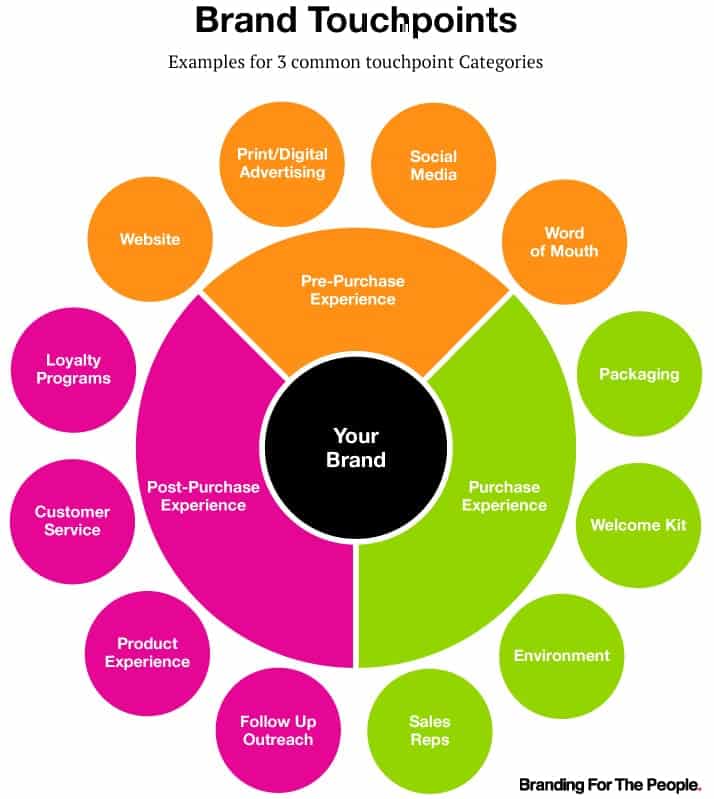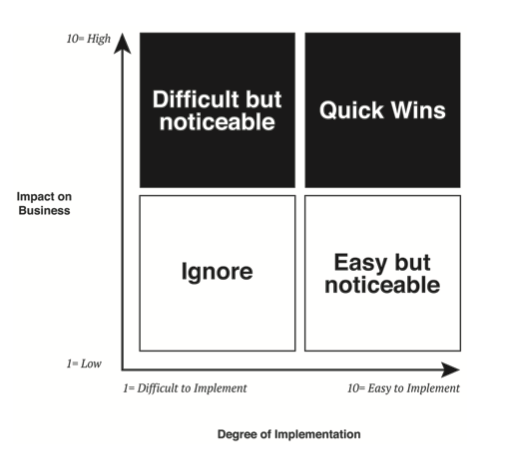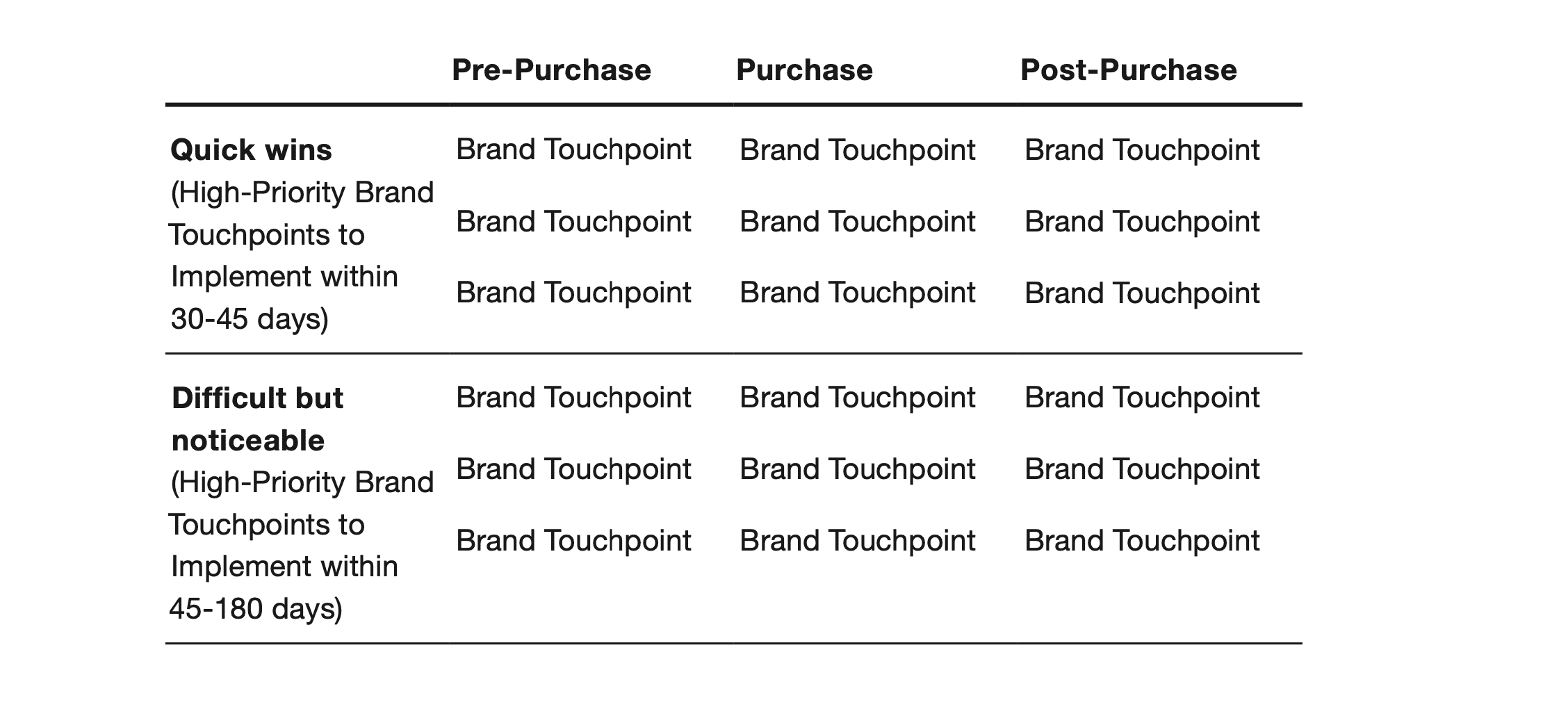When every moment in your brand experience matters, knowing which brand touchpoints to focus on can feel overwhelming.
We’ve said it before: A brand is a desired perception. And that perception is the culmination of all the various brand touchpoints your company provides that create a brand experience.
Brand touchpoints can be literally anything:
- Your website
- A retail space
- Direct mail
- Your customer service team
- And, even your legal department.
Every interaction a customer has with your company is essentially a brand touchpoint, all of which play a role in the overall customer experience and your brand’s eventual perception.
Knowing that every interaction matters, it’s essential to consider precisely which brand touchpoints to focus on with your business.
Fortunately, businesses have some control over when and where these brand touchpoints occur: websites, customer service, marketing emails, lead magnets, social media, print and video ads (and that’s just if you’re focusing on the online experience).
Realize that every business has different marketing needs, depending on budget and optimal channels for getting in front of its target audiences. It can be overwhelming and cost-prohibitive to implement every single brand touchpoint through every single channel all at once.
For this reason, we recommend prioritizing your Brand Marketing activities by implementing the brand touchpoints that will directly impact your revenue potential or business goals.
For example, if your customers and prospects interact with your brand in a physical space (e.g., a retail shop or office), creating a branded retail experience will be more important than if your customers and prospects are exclusively online, in which case, you may not need printed business cards or marketing collateral, trade show banners, or building signage.
Thankfully, selecting brand touchpoints doesn’t have to be a complex calculus problem.
Here’s a simple three-step process to prioritize your Brand Marketing activities and brand touchpoints.
Step 1. Make a comprehensive list.
List all the various Brand Marketing activities and brand touchpoints for everywhere your target audience could experience them along the three phases of the customer life cycle.
This includes:
- Pre-Purchase (touchpoints before a sale)
- Purchase (touchpoints at the time of sale)
- Post-Purchase (touchpoints after the sale)
This list is essentially your “Customer Journey Map” you may create when reviewing your customer experience branding. Rather than taking the perspective of what your target audience currently experiences, we recommend you start by keeping this broad and considering what other contact points are available (even if you don’t use them)?
By thinking about every phase of the customer life cycle, you can s ensure that you aren’t focusing solely on the front-end of a relationship but considering all points of contact throughout your target audience’s experience.
Below you’ll see a simple map that showcases three common touchpoint categories along the customer cycle.

Step 2: Prioritize your brand touchpoints.
Based on the potential for impact AND the degree of ease for implementation, prioritize your touchpoints.
Not every point of contact will be relevant to every business.
How many brands need a billboard?
How many need to use text messages?
How many brands require physical locations for their target audiences?
Stationary might be fun to pick out, but will you actually mail anything at all?
We recommend ranking each of your touchpoints on a scale of 1-10 for impact (1 = low impact, 10 = high impact).
Then, rank each one on a scale of 1-10 for ease of implementation (1 = difficult, 10 = easy).
When you populate each touchpoint opportunity using these criteria, you can start to determine where to best focus your time, money, and energy. In the chart below, we show you a way to visualize this process.

If creating an email campaign is rated ten (high) for Impact on Business AND ten (easy) for Ease of Implementation, this is considered a “Quick Win” and should be added as a touchpoint. On the other side of the spectrum, suppose you had considered creating a mobile app for your business but rated it as one (low) for impact and one (difficult) for ease of implementation, it should become pretty evident that this is a brand touchpoint to ignore and not prioritize.
The touchpoints that are worthy of your prioritized attention are those that will have the most impact on your business: The “Quick Wins” and the “Difficult but noticeable.”
Step 3: Map your prioritized activities and brand touchpoints.
Add your prioritized Brand Marketing activities and touchpoints and map them along the customer experience journey: Pre-Purchase, Purchase, and Post-Purchase.
Here’s a simple chart for how to plot this out.

With this map in hand, it should now be clear the best use of your time and how to focus on touchpoints that will have the most impact on your business. While you should first focus on the low-hanging fruit that gives you quick wins, it’s also essential to start planning for more long-term touchpoints that take longer but will have a noticeable impact on your brand.
We will be the first to realize that the longer you are in business, the more touchpoint opportunities you will encounter and ultimately choose to utilize. When that time comes, we recommend following the same process to help you prioritize.







